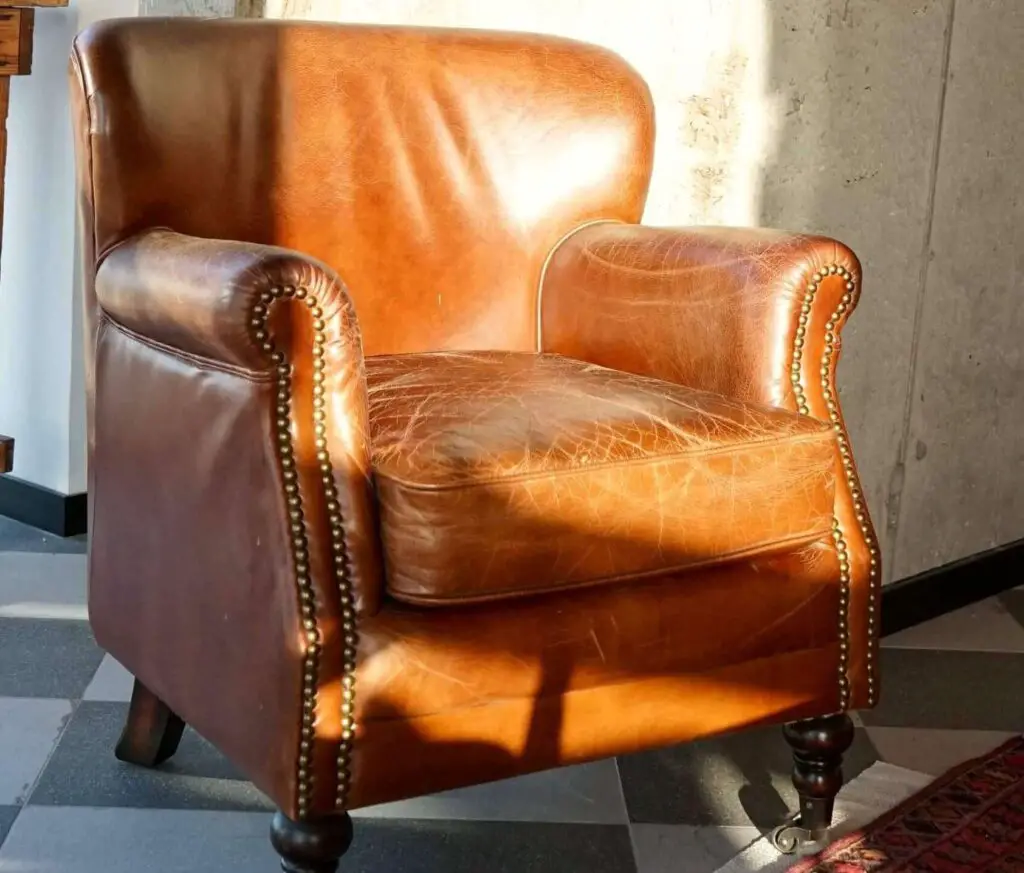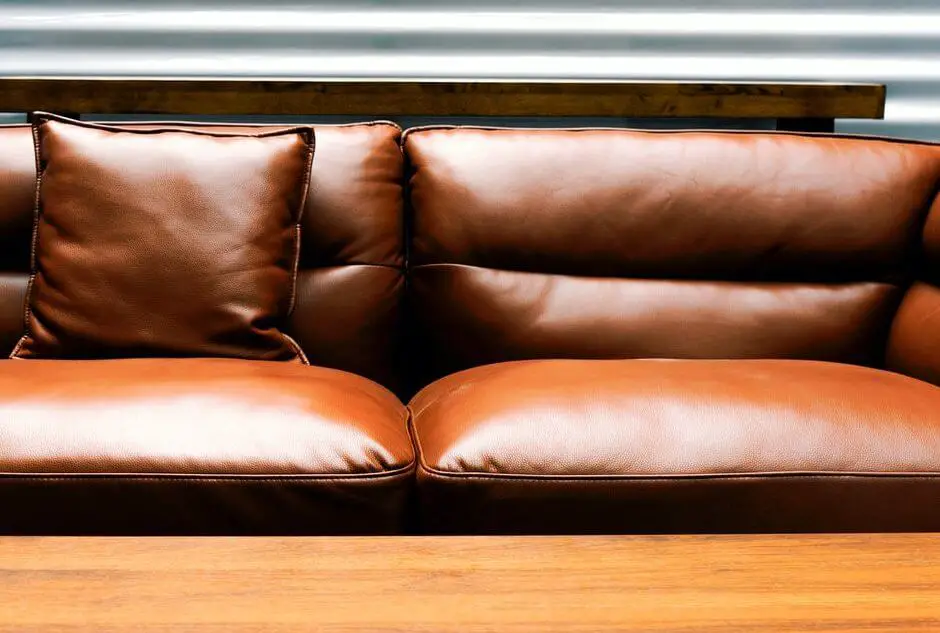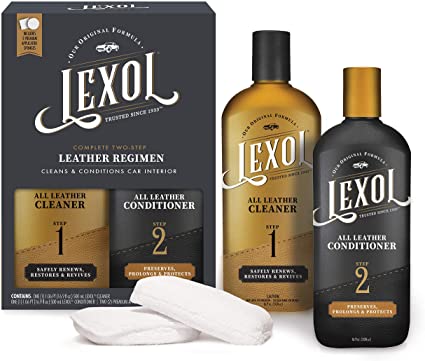Why is my leather couch peeling and cracking and how can I fix it?
Leather can last for years as long as it is well taken care of. Environmental conditions like low humidity and sunlight can cause it to dry out and start peeling or cracking. This is why leather furniture needs regular maintenance and moisturizing.
There are other factors that cause leather furniture to peel and crack, which we shall look at in this article. We shall also talk about how you can repair cracked or peeled leather and how to prevent it from happening in the future.

Why Is My Leather Couch Peeling And Cracking? 3 Reasons
Exposure to extreme weather conditions, such as arid or tropical weather, is considered the most common reason why your leather couch is peeling and cracking. Sometimes, the issue could be if the couch is made of faux or bonded leather. Some easy fixes for the issue are using a good-quality leather recoloring balm or working on it from scratch using a leather peeling kit.
1. You Have A Bonded Leather Couch
Genuine top-quality leather tends to be very expensive. It doesn’t peel or crack easily unlike low-quality bonded leather.
Bonded leather is a cheaper alternative to real leather. It is made from scraps of real leather that are glued together to form a sheet. In order to look like genuine leather, the bonded scraps are then coated with a synthetic sealant like polyurethane.
The synthetic sealant is not very elastic; thus, it does not stretch much. So after using your couch for a while, the synthetic coating on it reaches its stretching point and begins to peel or crack.

Therefore, if your leather couch is peeling or cracking, then most likely it is made from bonded leather because genuine leather has high elasticity so it does not peel or crack easily.
See also: Ways to prevent cat scratching on leather furniture
2. Exposure To Extreme Weather Conditions
Real leather needs extra care. Since it is animal skin, it is bound to dry out if exposed to extreme weather conditions like direct sunlight and low humidity.
Dry leather can easily start to crack and peel if not properly moisturized.
3. Your Couch Is Actually Faux Leather
Faux means fake or artificial. So faux leather couches are simply made from man-made materials like vinyl, PVC, or polyurethane.
This type of leather is even way cheaper than bonded leather because it does not contain any real leather in it.
As earlier mentioned, synthetic materials like PU and vinyl do not have the same elasticity as genuine leather.
Thus, faux leather seats are bound to start peeling and cracking once they reach their stretching point. This usually happens after a few months in use.
See also: Best non-slip leather couch slipcovers
How To Repair And Fix Cracked And Peeling Leather Couch
Damaged leather can be repaired in a few steps as discussed below.
Step 1: Clean The Couch
The first step is to clean the couch to prepare it for fixing.
Use an abrasive pad to scrub off the peeled leather in the affected areas.
Wipe the surface using rubbing alcohol and leave it to air dry for about an hour.
Step 2: Use Leather Recoloring Balm Or Cream For Minor Cracks
Once dry, if the affected area is not too big, use a recoloring balm to restore its color.
The balms come in different colors so choose the one that matches the color of your couch.
See our previous article on the Best leather color restorer balm
Step 3: Get A Peeling Leather Sofa Repair Kit
Applying the restorer balm is only a temporary solution and may not work on large surfaces.
For a permanent fix, you will need a leather repair kit that can easily repair holes, burns, cuts, tears, scratches, and marks on leather couches, sofas, and recliners.
Fortivo leather repair kit for instance consists of a leather filler that helps to cover the damaged surface.
It is made of a high-quality repair adhesive compound that dries quite fast; thus, hiding the cracks and peeled areas on the couch.
You do not have to worry about color because Fortivo repair kit comes in seven inter-mixable colors; black, white, yellow, green, blue, brown, and red.
To use this kit, it is advisable to first mix the colors to match your couch if it has a different color from what is provided.
Keenly follow detailed instructions provided on how to mix the colors in order to achieve the desired results. You can try this first on a practice leather patch that is included in the package.

How To Stop Leather Couch From Peeling And Cracking


The best way to stop your leather couch from peeling or cracking is to ensure proper maintenance by moisturizing or conditioning it regularly.
To moisturize the leather, apply a generous amount of leather conditioner at least twice a year.
The conditioner helps the leather to maintain its natural oils so that it remains soft and supple and prevents drying and cracking.
There are several brands of conditioners available but the most popular is Lexol leather conditioner. It works perfectly not only on couches and sofas but also on shoes, bags, car seats, and other leather items.
In addition, it can be used on vinyl items to prevent cracking and premature aging.
See also: Best battery pack for reclining furniture
Frequently Asked Questions (FAQs)
Yes, peeling leather can be repaired using a couple of methods. The first method is to apply a soft filler to the area that is peeling off.
Then, using a putty knife, you can easily fill in the leather where it has cracks or rips. You can also use leather paints.
To paint the leather, you will have first to clean the surface, pull out any loose threads and paint over the affected area well. Then, leave it in a place that gets sunlight for at least 30 mins.
2. Why Is The Top Layer Of Leather Sofa Peeling?
If the leather sofa is peeling, then it is likely that it is not leather at all. Leather is a long-lasting material and does not peel unless it is ancient.
The leather you have must be bonded or mixed leather. This leather is more likely to peel or flake easily. Another reason could be that the leather’s surface is painted and peeling off – not the original leather.
Sometimes, it could also be the sealant on the leather coat that could peel. Unless you live in low humidity, your leather couch will be fine.
But, using more cleaners or using harsh cleaning products could also be bad for the leather couch.
3. Does Genuine Leather Peel?
No, genuine leather does not peel easily. Genuine leather is made of animal skin, so it needs to dry out before you use it. The moisture ensures that the leather is sustained.
To clean the leather, you can apply a cleaner. Another step in caring for leather is to condition it usually. Eventually, it will crack and peel due to use.
You can avoid this by moisturizing the leather item. If you live in a place with low humidity, it might take away the moisture from the leather, causing it to peel.
4. Does Bonded Leather Crack And Peel?
Bonded leather is a less expensive alternative to leather. It is created using a strong adhesive and then attached to PU, short for polyurethane.
Scraps of leather put it together. It is more durable and affordable, so most people use it for upholstery and furniture use. But, you cannot stretch the bonded leather too much.
It will start peeling if you use it harshly. Also, bonded leather has a stretching threshold, so it may crumble when it gets stretched more than that. Bonded leather is a poor-quality alternative to leather.
Conclusion
Why is my leather couch peeling and cracking? If you have been wondering why this is happening, we have highlighted some of the reasons such as poor quality bonded leather, faux leather, and exposure to extreme weather conditions.
Luckily, you do not have to get a new couch because there are various ways to repair damaged leather. You can use a recoloring balm if the damage is minor or a leather repair kit for a permanent fix.
Most importantly, get into the habit of moisturizing and conditioning your leather furniture at least twice a year to prevent drying out and cracking.